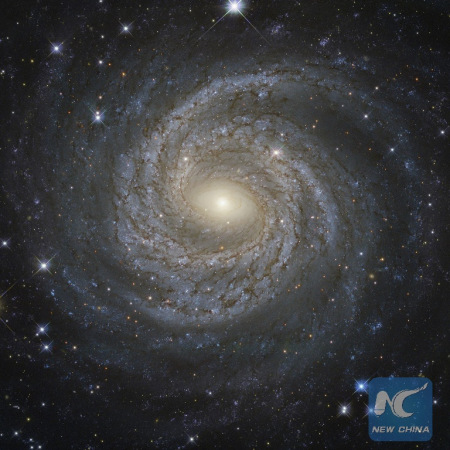
A NASA/ESA Hubble Space Telescope image shows a spiral galaxy NGC 6814, whose luminous nucleus and spectacular sweeping arms, rippled with an intricate pattern of dark dust, is a highly variable source of X-ray radiation, causing scientists to suspect that it hosts a supermassive black hole with a mass about 18 million times that of the Sun. (Courtesy of NASA)
Our universe contains at least two trillion galaxies, making it at least 10 times more crowded than previously thought, a new study said Thursday.
Over the last 20 years, scientists have used deep-space images from the Hubble Space Telescope to estimate that the universe we can see contains around 100 billion galaxies.
In the new study, an international team of astronomers, led by Professor Christopher Conselice of the University of Nottingham, converted images of deep space from telescopes around the world, and especially from Hubble, into 3D maps, in order to make accurate measurements of the number of galaxies at different epochs in the universe's history.
In addition, they used new mathematical models to infer the existence of galaxies that the current generation of telescopes cannot observe.
This led to the conclusion that there are a factor of 10 more galaxies in a given volume of space when the universe was a few billion years old compared with today.
Most of these galaxies are low mass systems with masses similar to those of the satellite galaxies surrounding the Milky Way, according to the study published in the Astrophysical Journal.
In order for the numbers of galaxies we now see and their masses to add up, there must be a further 90 percent of galaxies in the observable universe that are too faint and too far away to be seen with present-day telescopes, said the study.
Over time, these myriad small faint galaxies from the early universe merged into the larger galaxies we can now observe.
"It boggles the mind that over 90 percent of the galaxies in the universe have yet to be studied," Conselice said in a statement.
"Who knows what interesting properties we will find when we discover these galaxies with future generations of telescopes?"


















































